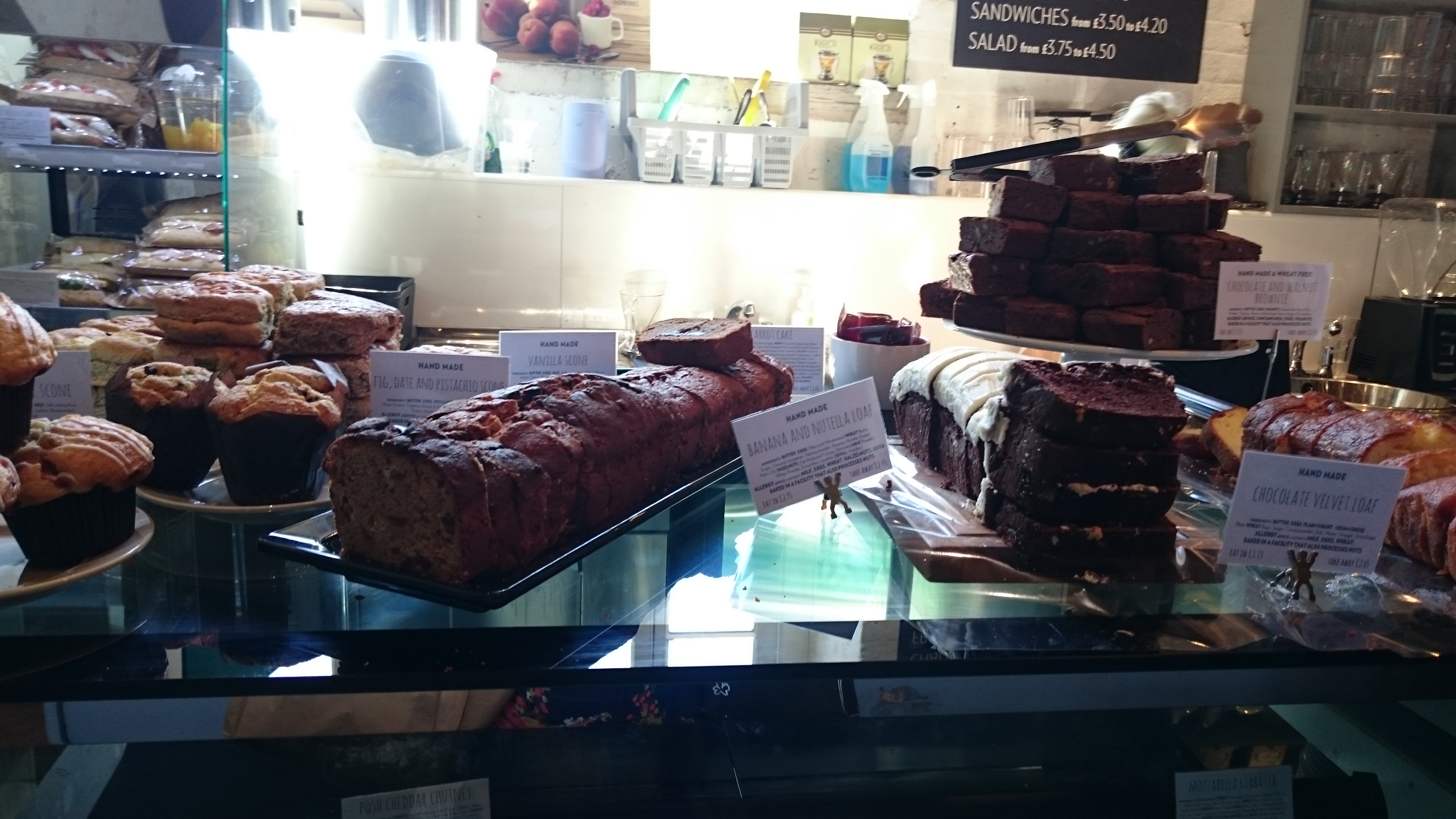So a couple of weeks ago I ventured into London for a conference on Questioning Rights: Disruptive and emerging (Intellectual Property Rights) IPR management practices in the arts. It was housed in Central St. Martins’ new location in the Granary building behind King’s Cross St. Pancras.
I’d intended to take a photo of it as it was looking gorgeous in the spring sunshine but I accidentally took a picture of the cake counter in the café instead.

As for the conference itself, I wasn’t sure quite what to expect…but what I found was an interesting and engaging conference bringing together academics, professionals and artists to talk about their perspectives on IPR.
While the first two sessions were geared more towards the creators rather than the users of works and weren’t really applicable to me, it was good to hear their preception of how IPR works and how it affects them.
A common thread that emerged was that IPR legislation in its current state is both baffling to the uninitiated and hopelessly behind the times. Most speakers seemed to agree that there needed to be a demystification of IPR and/or a move away from using IPR. Perhaps because legislation is better at addressing actions rather than intent when it comes to IP?
There’s quite a grey area between inspiration and imitation that current IPR doesn’t address and a fear that excessive reliance on legislation will stifle creativity. In their close-knit communities artists rely heavily on self-policing and reputation, but this only works if you are personally invested in the group. Once their IP moves to a wider (and relatively anonymous) audience this framework breaks down.
Design and Artists Copyright Society talked about how they helped people manage their creative legacy and its disposal, but as far as I could tell they did not have any consultants with curatorial or archival experience (or indeed any experience with the heritage sector except as artists), which seems a bit one sided. How do they address the needs of future researchers who might be interested in an artist’s creative process or social context rather than the end product? Is it even on their radar?
It was a shame that the session on ‘Making the Most of Cultural Assets’ was at the end of the day as it ran a bit long and there wasn’t really time left for discussion. I thought it was quite relevant because much of the day dealt with the need for addressing what becomes of a work once it leaves an artist’s sphere of influence and certainly know what people actually want or expect to take away from it (rather than assuming) would help in formulating policy.
My favourite talk of the day was probably Ben White’s from the British Library. It was mainly about copyright and how it affects the heritage sector. He also touched on recent legislation regarding orphaned works and the EU Observatory’s Office of Internal Harmonisation (which he assured us was not as Orwellian as it sounded). He was quite enthusiastic about the way collective licencing works in Scandinavia, France, and especially Germany; it sounds like a model that would really benefit us! So I do hope that that’s the direction licencing goes in in the UK.
For those who don’t know (including me before this talk!) extended collective licencing means that an organisation (e.g. screenwriter’s guild) can extend their mandate to cover non-members and grant licences on their behalf. The problem with this in the UK is that it’s a limited licence subject to renewal after a few years, so an organisation could potentially end up investing significantly in a collection or work only to not have its licence renewed.
A bad deal!
At the end of the day the conference certainly got me ‘questioning rights’ and where IPR will go in the future.
